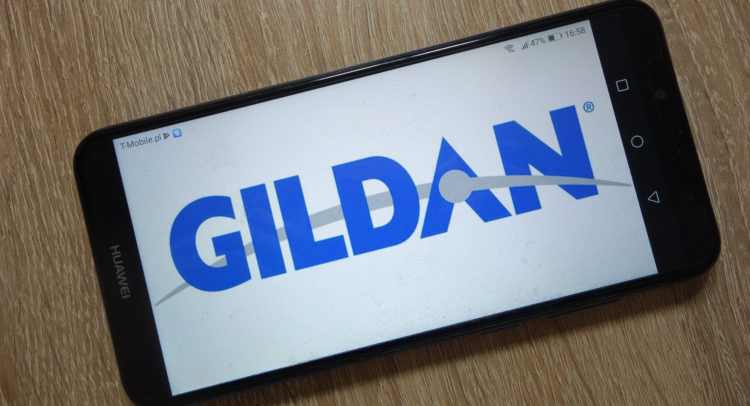Gildan Activewear (TSE: GIL) (GIL) manufactures and sells printwear and branded apparel. Its products include activewear, underwear, socks, hosiery, and legwear.
The firm operates under the following brands: Gildan, American Apparel, Comfort Colors, Gold Toe, Anvil, Secret, and Silks, among others.
Gildan has a measurable competitive advantage with strong backing from the analyst community. However, it’s possible that the company is trading near fair value already.
Gildan’s Competitive Advantage
There are a couple of ways to quantify a company’s competitive advantage using only its income statement. The first method involves calculating a company’s earnings power value (EPV).
Earnings power value is measured as adjusted EBIT after tax, divided by the weighted average cost of capital, and reproduction value (the cost to reproduce/replicate the business) can be measured using a company’s total asset value. If the earnings power value is higher than the reproduction value, then a company is considered to have a competitive advantage.
For Gildan, the calculation is as follows:
EPV = EPV adjusted earnings / WACC
$4,744 million = $427 million / 0.09
Since Gildan has a total asset value of $3,350 million, we can say that it does have a competitive advantage. In other words, assuming no growth for Gildan, it would require $3,350 million of assets to generate $4,744 million in value over time. Please note that all figures in this article are in U.S. Dollars.
The second method to determine if a company has a competitive advantage is by looking at its gross margin because it represents the premium that consumers are willing to pay over the cost of a product or service. An expanding gross margin indicates that a sustainable competitive advantage is present.
If an existing company has no edge, then new entrants would gradually take away market share, leading to a decreasing gross margin as pricing wars ensue to remain competitive.
In Gildan’s case, its gross margin has remained flat in the past several years, ranging from around 26-29% in the past nine Fiscal years. As a result, its gross margin indicates that a competitive advantage is present in this regard as well.
Valuation
I will use a single-stage DCF model to value Gildan because its free cash flows are cyclical and difficult to predict. For the terminal growth rate, I will use the 30-year Government of Canada bond yield as a proxy for expected long-term GDP growth.
The calculation is as follows:
Fair Value = Average FCF per share / (Discount Rate – Terminal Growth)
$29.85 = $2 / (0.1 – 0.033)
As a result, I estimate that the fair value of Gildan is approximately $29.85 under current market conditions. With its share price near $27, the stock is likely undervalued, but not by much.
Wall Street’s Take
Turning to Wall Street, Gildan has a Strong Buy consensus rating based on five Buys assigned in the past three months. The average Gildan price target of $48.67 implies 78.5% upside potential.

Final Thoughts
Gildan has solid fundamentals with a measurable competitive advantage. However, it appears that most analysts are currently over-optimistic with their price targets, as the stock price is currently near fair value.









